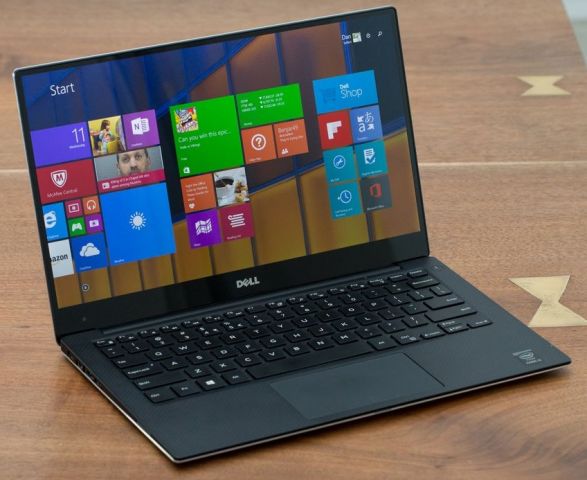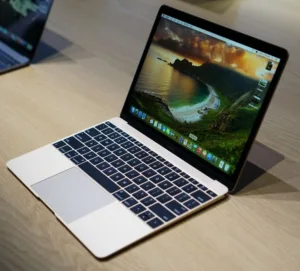The new 12″ MacBook (available April 10) announced this week by Apple and the new XPS 13 notebook PC from Dell (available now) that was first shown at CES 2015, are both great examples of the current state-of-the-art in notebook computer design.
The New 12″ MacBook Source: The Verge
 Dell XPS 13 Source: The Verge
Dell XPS 13 Source: The Verge
The displays of the two laptops make for an interesting comparison. The MacBook is equipped with a 12″ 2304 x 1440 LCD while the XPS 13 is fitted (optionally) with a 13.3″ 3200 x 1800 touchscreen LCD. The Dell model is also available with an HD (1920 x 1080) and a non-touch display.
As has been the case with several of Apple’s higher end products, the MacBook display is described as a Retina display. The 12″ (diagonal) LED-backlit display with IPS LCD is 2304 x 1440 pixels with 226 pixels per inch and a 16:10 aspect ratio. The Dell’s 13.3″ 3200 x 1800 (276 ppi) 16:9 display is described as enabling the market’s smallest 13″ laptop since the “virtually borderless infinity display cleverly fits a 13″ display into the size of an 11″ laptop”. The Dell display incorporates a small 5.2mm bezel on both sides and the top of the display. Marketing considerations are clear in both firms’ description of their technology. That is, Apple uses “Retina display” as a key branding element while Dell opts for the perhaps equally meaningless term “Infinity display”. Branding details aside however, as expected and reported by most users, both displays offer good display performance.
The MacBook and XPS 13 laptops have generally comparable pricing but have some key differences in specifications. The 2015 12″ MacBook is a fanless design incorporating an Intel Core M CPU with approximately 5 watt power dissipation. In contrast, the 2015 XPS 13 includes a somewhat higher performance fifth generation Broadwell processor (with i3, i5 or i7 options) dissipating about 15 watts necessitating a cooling fan. A comparison of weight and dimensions shows that the MacBook weighs only 2.03 pounds with dimensions of 11.04″ x 7.74″ x 0.52″ thick while the XPS 13 weighs 2.8 pounds and measures 11.98″ x 7.88″ x 0.6″.
A further comparison of the new MacBook and XPS 13 reveals interesting details involving I/O ports, trackpad details, battery packaging and more, but at a glance the new Apple and Dell laptops are both strong contenders. Likely, a key element of choice will be the OS selection of OS X versus Windows. In my case, as a Windows user, I had already made my choice and have been using a Dell XPS 13 for the past month.
With the high pixel densities (226 and 276 ppi) of the MacBook and XPS 13 displays, respectively, it is hard to imagine that users will complain of individual pixel visibility. In fact, for the XPS 13 using my trusty 10x eye loupe I am somewhat hard pressed to make out individual sub-pixels. I guess I will have to obtain a higher magnification loupe for future observations. However, a key issue in using such high pixel count displays is the scaling necessary for using these displays in conjunction with multiple external monitors.
For example, with my XPS 13 I also use two 22″ 1920 x 1080 displays to extend my Windows 8.1 desktop. The scaling of operating system elements and applications simultaneously across multiple displays with differing physical dimensions and resolutions is imperfect, as reported by both Windows and OS X users. There are trade-offs to be considered and compromises to be made when designing for such circumstances. However, going forward, I expect that OS and application developers will further improve scaling. For now, I have a configuration that works satisfactorily for me although some quirks remain. I would be interested in hearing your opinions, suggestions and solutions concerning display scaling as we move forward to an Ultra High Definition future. – Phil Wright


